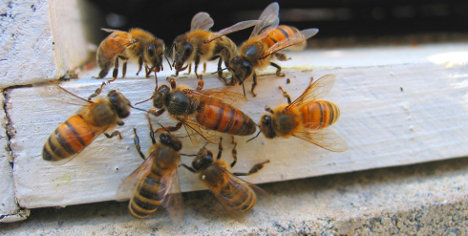By Stephen Vance, Staff

Those wanting to submit comment about Ontario’s plan to reduce the use of neonicotinoid pesticide use have until May 7 to do so.
The Ontario government is planning to take what they say is “the strongest action in North America to protect bees, birds, butterflies, and other pollinators by proposing new rules that would reduce the number of acres planted with neonicotinoid-treated corn and soybean seeds by 80 per cent by 2017.”
“Some neonicotinoid insecticides are toxic to bees and other beneficial insects. The government is taking a precautionary approach to limit the use of neonicotinoid treated seeds. The proposed regulation sets rules for the sale and use of neonicotinoid-treated corn and soybean seeds,” said the Ontario government of the proposed changes.
The draft regulation is available for public comment on the environmental registry until May 7, 2015. If approved, new rules would take effect July 1, 2015.
“Following province-wide consultations over the winter, the proposed regulation will help protect pollinators and ensure a productive agricultural sector,” said the Ontario government.
The proposed regulatory changes are also an important step in developing a pollinator health action plan that the government says will examine key stressors that can affect pollinator health, including:
-
Pesticides
-
Loss of habitat and nutrition
-
Climate change and weather
-
Disease, pests and genetics
In the winter of 2013-2014, bee deaths in Ontario reached 58 per cent. The generally accepted level by those who care for and breed bees is 15 per cent. Bees and other pollinators are responsible for pollinating roughly 13 per cent of agricultural crops in Ontario (crops worth about $897 million), and support $26 million annually in honey production.
Meaford beekeeper Richard Elzby will be submitting his thoughts before the deadline including a request that the province act more quickly than is being proposed.
“I will be requesting that the phase in period be shortened as even the partial ban of 80% reduction of neonics isn’t until 2017,” Elzby told The Independent.











